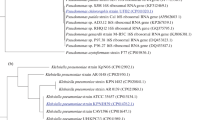Abstract
The microbial decomposition of creatinine was found to proceed mainly via N-methylhydantoin or creatine as the first degradation product. Either N-methylhydantoin or urea or both were detected as metabolites derived from creatinine in various microorganisms, and creatinine deiminase and creatinine amidohydrolase activities were detected concomitantly. N-Methylhydantoin hydrolase and N-carbamoylsarcosine amidohydrolase were found to be formed inducibly in the presence of creatinine or N-methylhydantoin. Three microorganisms which decompose creatinine in different ways were screened from soil. Pseudomonas putida 77 rapidly metabolized creatinine solely via N-methylhydantoin. Degradation of creatinine proceeded with both creatine and N-methylhydantoin as the first degradation products at the same time in Pseudomonas sp. H21. Pseudomonas sp. 0114 was found to metabolize creatinine mainly via creatine and to also metabolize N-methylhydantoin. Changes in the metabolites of creatinine during a cultivation or enzyme reaction were found to be closely related to the enzyme activities of interest which are regulated by creatinine or N-methylhydantoin in different ways depending on the microbial strain.
Similar content being viewed by others
References
Akamatsu S, Kanai Y (1951) Bacterial decomposition of creatinine. I. Creatininmutase. Enzymologia 15:122–125
Appleyard G, Woods DD (1956) The pathway of creatinine catabolism by Pseudomonas ovalis. J Gen Microbiol 14:351–365
Dubos RJ, Miller BF (1936) The production of bacterial enzymes capable of decomposing creatinine. J Biol Chem 121:429–445
Esders TW, Lynn SY (1985) Purification and properties of creatinine iminohydrolase from Flavobacterium filamentosum. J Biol Chem 260:3915–3922
Gerhardt P, Murray RGE, Costilow RN, Nester EW, Wood WA, Krieg NR, Phillips GB (1981) Manual of methods for general bacteriology. American Society for Microbiology, Washington, DC
Kaplan A, Naugler D (1974) Creatinine hydrolase and creatine amidinohydrolase. I. Presence in cell-free extracts of Arthrobacter ureafaciens. Mol Cell Biochem 3:9–15
Kaplan A, Szabo LL (1974) Creatinine hydrolase and creatine amidinohydrolase. II. Partial purification and properties. Mol Cell Biochem 3:17–25
Kim JM, Shimizu S, Yamada H (1968) Purification and characterization of a novel enzyme, N-carbamoylsarcosine amido-hydrolase, from Pseudomonas putida 77. J. Biol Chem (in press)
Kopper PH (1947) An atypical strain of Pseudomonas aeruginosa. J Bacteriol 54:359–362
Kopper PH, Beard HH (1947) Creatinase activity of a strain of Pseudomonas. Arch Biochem 15:195–199
Kopper PH, Robin L (1950) The metabolic breakdown of sarcosine by a strain of Pseudomonas aeruginosa. Arch Biochem 26:458–460
Krieg NR, Holt JG (1984) Bergey's manual of systematic bacteriology, vol 1. Williams & Wilkins, Baltimore
Kun E, Kearney EB (1974) Ammonia. In: Bergmeyer HU (ed) Methods of enzymatic analysis, 2nd edn, vol 4. Verlag Chemie, Weinheim, pp 1802–1806
Lowry OH, Rosebrough NJ, Farr AL, Randall RJ (1951) Protein measurement with the Folin phenol reagent. J Biol Chem 193:265–275
Nyc JF, Mitchell HK (1947) Synthesis of orotic acid from aspartic acid. J Am Chem Soc 69:1382–1384
Rikitake K, Oka I, Ando M, Yoshimoto T, Tsuru D (1979) Creatinine amidohydrolase (creatininase) from Pseudomonas putida. J Biochem 86:1109–1117
Roche J, Lacombe G, Girard H (1950) The specificity of action of certain bacterial deguanidinases on precursors of urea, and on arginine dihydrolase. Biochim Biophys Acta 6:210–216
Szulmajster J (1958a) Bacterial fermentation of creatinine. I. Isolation of N-methylhydantoin. J Bacteriol 75:633–639
Szulmajster J (1958b) Bacterial degradation of creatinine. II. Creatinine desimidase. Biochim Biophys Acta 30:154–163
Tsuru D, Oka I, Yoshimoto T (1976) Creatinine decomposing enzymes in Pseudomonas putida. Agric Biol Chem 40:1011–1018
Uwajima T, Terada O (1977) Production, purification and crystallization of creatinine deiminase of Corynebacterium lilium. Agric Biol Chem 41:339–344
Yamada H, Kishimoto N, Kumagai H (1976) Metabolism of N-substituted amines by yeast. J Ferment Technol 54:726–737
Yamada H, Shimizu S, Kim JM, Shinmen Y, Sakai T (1985) A novel metabolic pathway for creatinine degradation in Pseudomonas putida 77. FEMS Microbiol Lett 30:337–340
Yoshimoto T, Oka I, Tsuru D (1976) Purification, crystallization, and some properties of creatine amidinohydrolase from Pseudomonas putida. J Biochem 79:1381–1383
Author information
Authors and Affiliations
Rights and permissions
About this article
Cite this article
Shimizu, S., Kim, J.M., Shinmen, Y. et al. Evaluation of two alternative metabolic pathways for creatinine degradation in microorganisms. Arch. Microbiol. 145, 322–328 (1986). https://doi.org/10.1007/BF00470865
Received:
Accepted:
Issue Date:
DOI: https://doi.org/10.1007/BF00470865




